Tweaking an Icon: Upgrading a Jeep Wrangler
Outfitting the Wrangler Unlimited for Towing
and Off-Road Travel
Article Date: June, 2012
Article and Photography by Mark Quasius
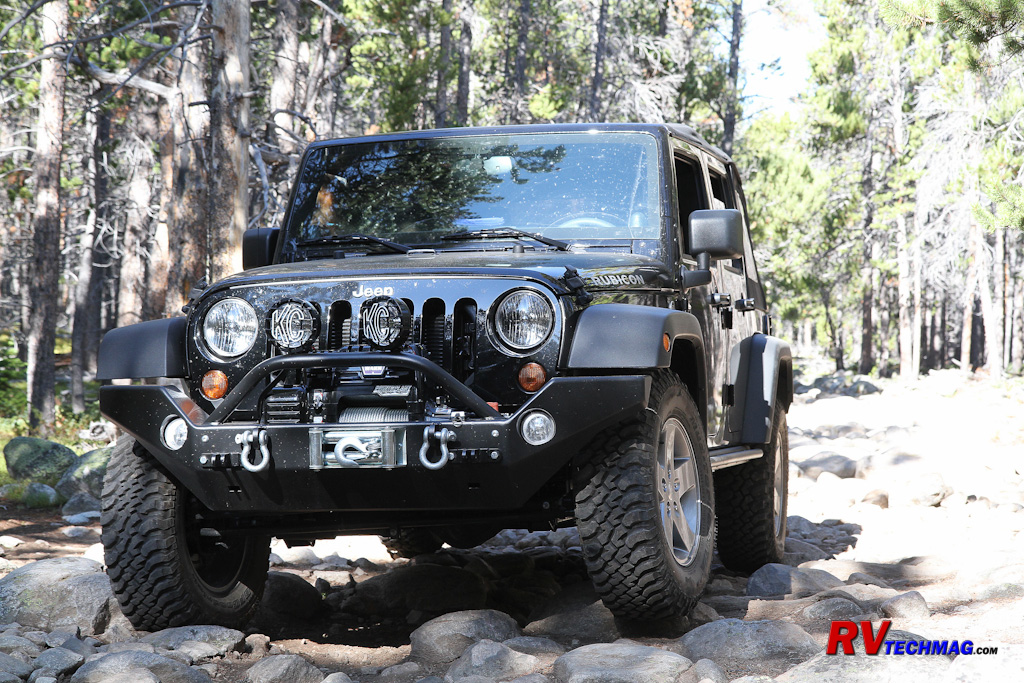
With all the extra weight added from the winch and bumpers the Jeep was now sagging in the front. To alleviate this I
installed a Terraflex front coil spring spacer kit, designed to raise the Jeep 2 inches. This gave us back the 1-1/2 inches that we lost and
raised it up an extra half inch to reduce the factory tail high rake and make it appear more level.
Auxiliary Braking
Towing a small vehicle like a Jeep behind a large, heavy motorhome generally doesn't add a significant amount of stress
to the RV's breaking requirements. But, there are times when I've nailed the brakes and without the towed vehicles auxiliary brakes, that extra
stopping distance made the difference between a near miss and impact.
Plus, if the towed vehicle should ever come loose you'll want a breakaway system to lock up those brakes to prevent it
from becoming a runaway ballistic missile. The M&G auxiliary braking system that I chose utilizes the motorhome's air brakes but an optional
air compressor unit is available for gasoline powered motorhomes with hydraulic brakes.
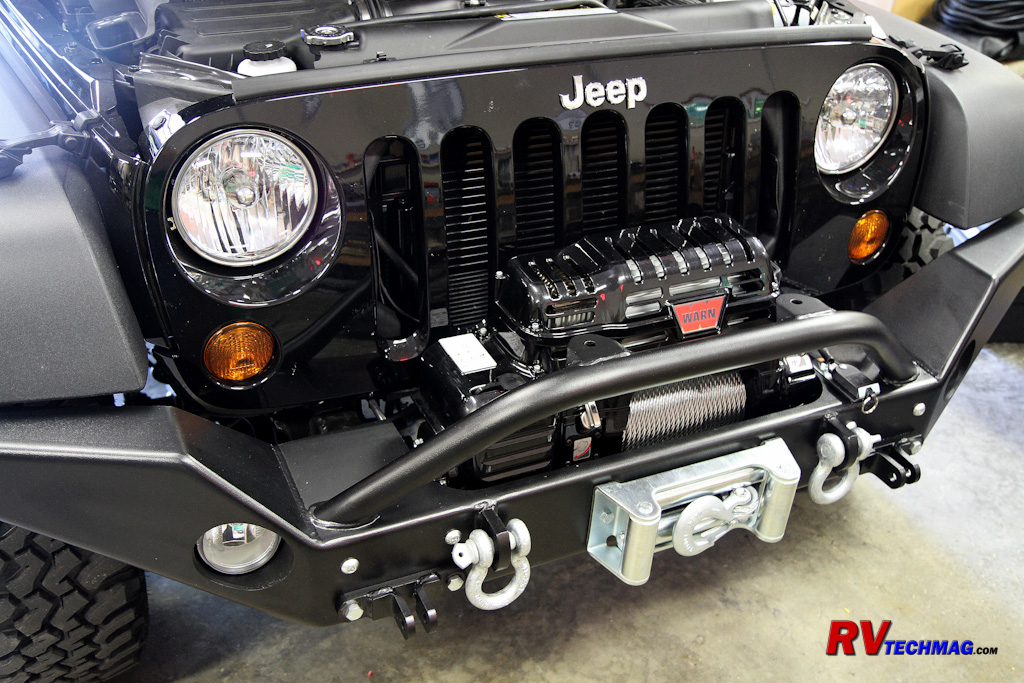
The Rock Hard full-width front bumper offered a low winch mounting location to provide maximum airflow to the radiator. This bumper can
accommodate the massive Warn Powerplant winch with integral air compressor.
In order to install the M&G system you need to remove the master cylinder from the vacuum booster. The M&G module is
then installed between the two units. An air-line is then connected to the motor home while another line is fitted to the M&G module and run to
the front of the Jeep. A quick disconnect air-line is used to connect the two brake systems for towing. As the motorhome's brakes are applied,
air pressure enters the M&G module and spreads two pistons apart to energize the master cylinder and apply the Jeep's brakes. An optional
breakaway valve is connected to a small air tank so that the brakes may be applied in the event of a breakaway.
|

While the Rock Hard front bumper had just enough room to squeeze the Warn Powerplant in, the factory bumper mounting brackets
intruded slightly into that area. A disc grinder was used to trim the brackets a bit to open up that area.
|
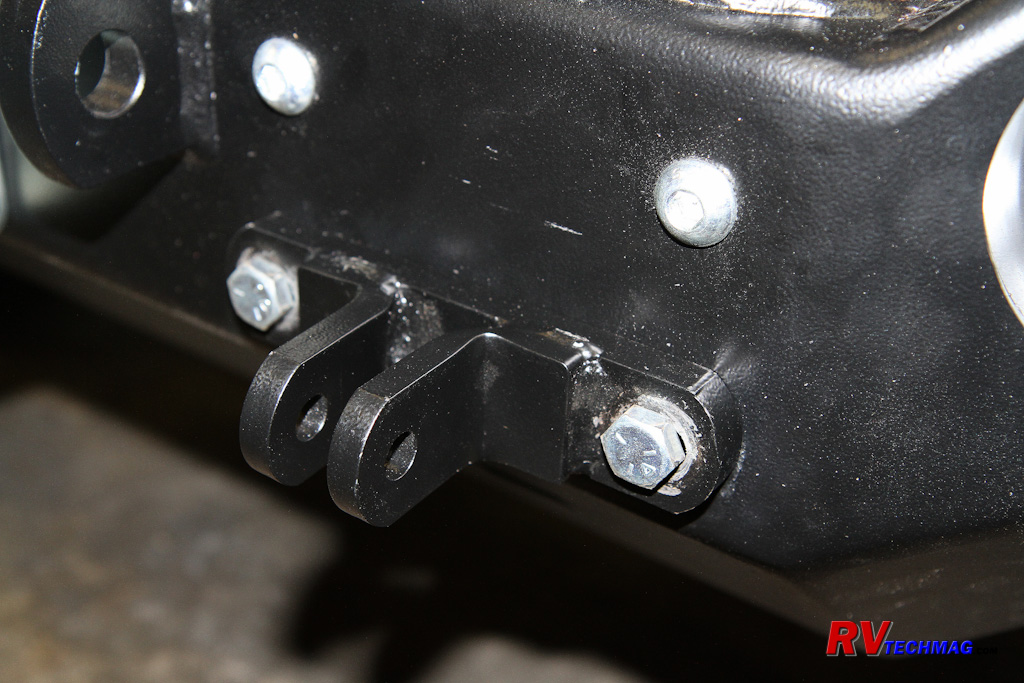
Rock Hard offers tow bar adaptor brackets for either Blue Ox or Roadmaster tow bars. These brackets bolt right to the bumper at its
frame mounting locations and eliminate having a low slung tow bar base plate that can get damaged on off-road trails.
|
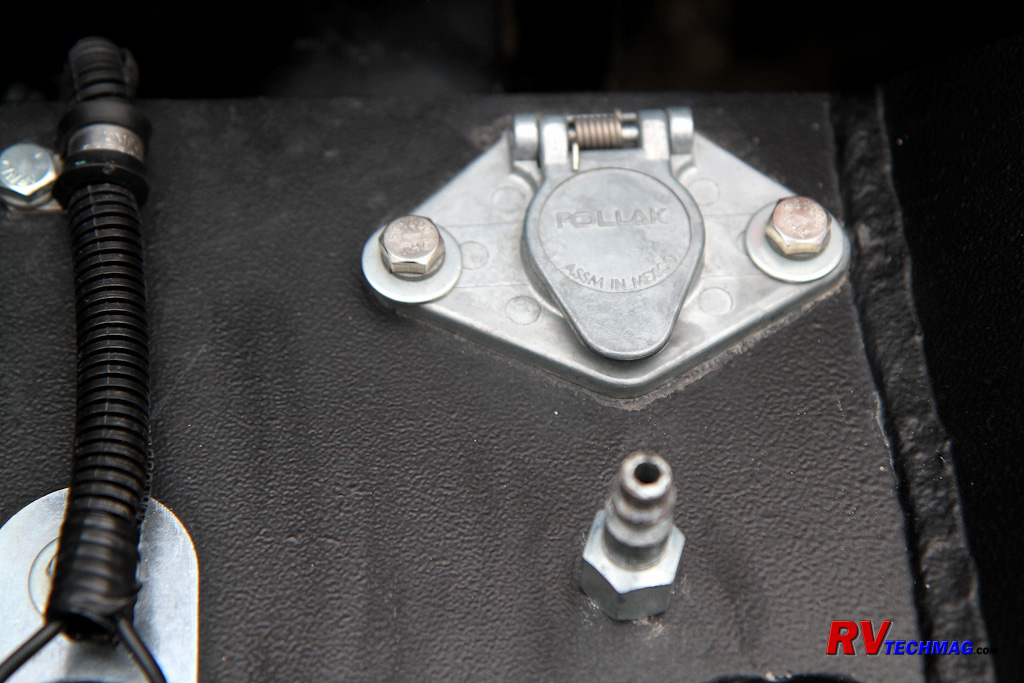
The top surface of the front bumper offered plenty of room, making it easy to install my tow lighting socket, an airline connection
for the braking system, and the breakaway switch.
|
Wiring it all Together
Now that everything was bolted into place it was time to wire it all up. The Tow Daddy Plug-N-Tow system is designed to
plug right into the Jeep's tail light harness so no splicing is required. I placed the module behind the left taillight and plugged it into both
rear lights. The wires that feed the system were then run up to the front bumper area, where they were connected to the lighting socket installed
in the front bumper. I also ran a 12-gauge battery hot line with circuit breaker from the RV to the Jeep to keep the Jeep's battery charged when
towing. The winch was then connected to the battery terminals and the receiver for the winch's wireless remote was connected.
|
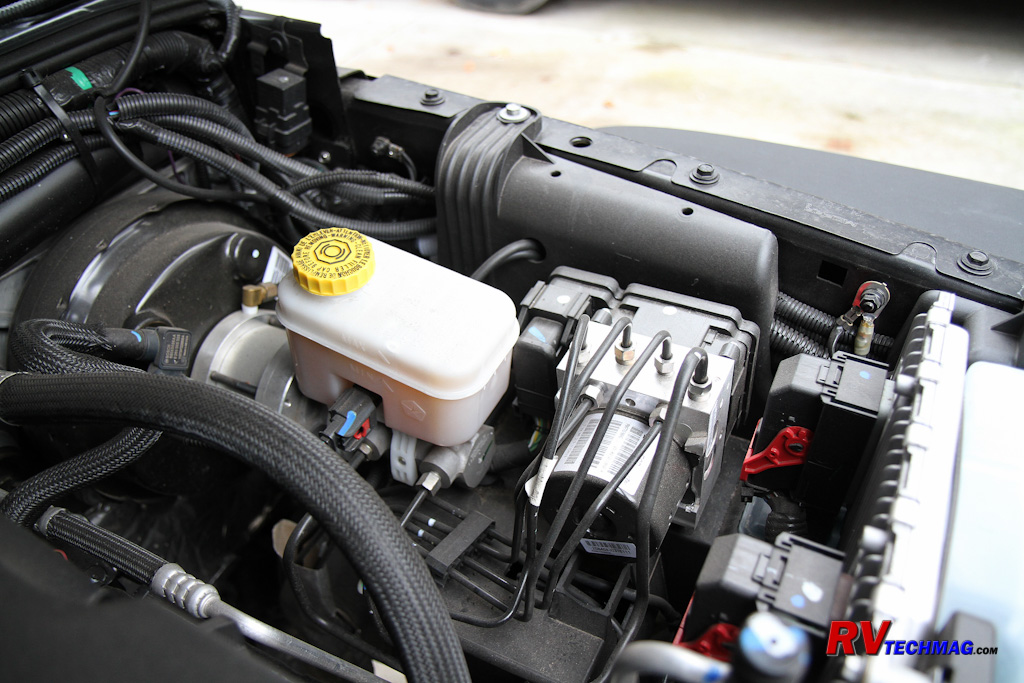
The M&G auxiliary brake module mounts between the master cylinder and vacuum booster. In order to make room for the M&G module the
small plastic wall was cut away so that the brake assembly could move forward the required amount.
|

A charge line between the RV and Jeep allowed the motorhome's battery power to keep the Jeep's battery charged when towing. A 20 amp
circuit breaker was installed near the battery to provide overcurrent protection.
|
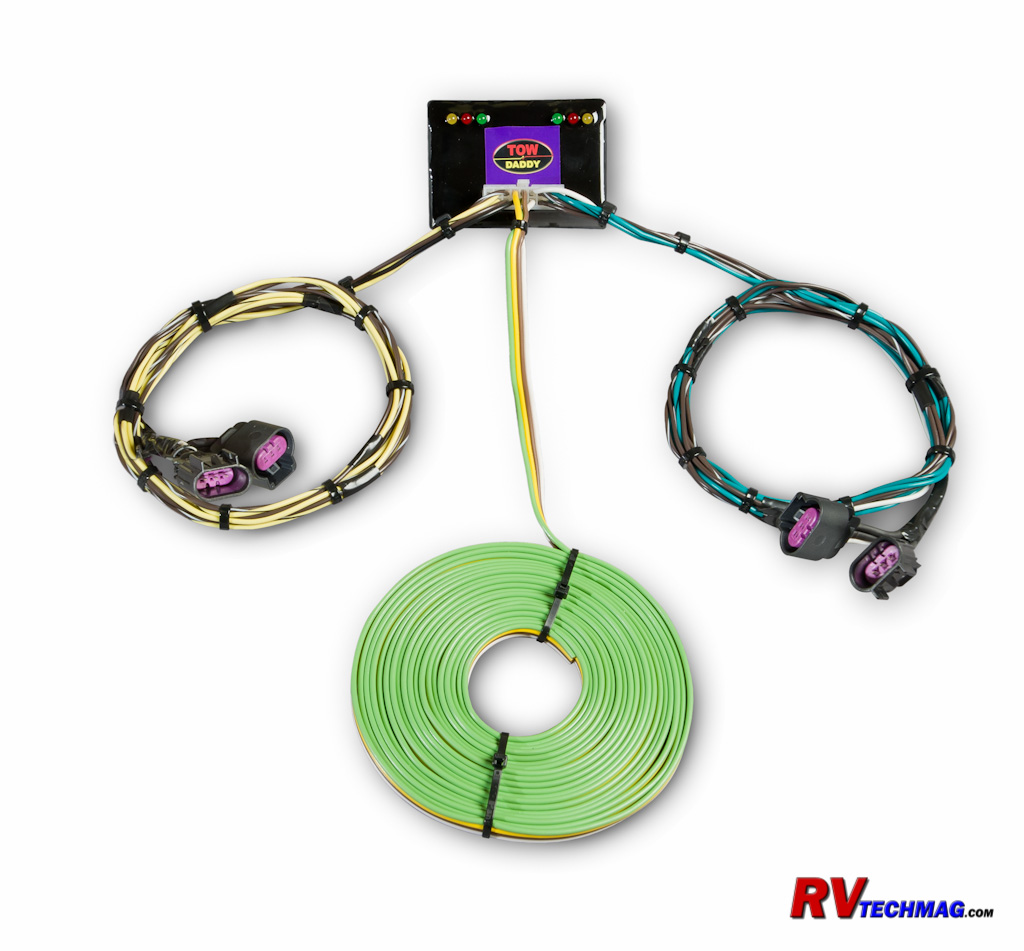
The Tow Daddy lighting setup is state of the art. It offers plug and play connections to your tail lights without requiring any cutting
of those wires. The control module is equipped with status LEDs and provides back-feed protection to automatically switch between the
lighting circuits used when towing or during normal driving.
|
Final Testing
I disassembled our old Blue Ox tow bar, sandblasted it, and painted it with Eastwood gloss black ceramic chassis paint. All
worn parts were replaced and I even picked up a shiny new set of locking hitch pins to replace the pitted ones that I had been using for years.
Once done I hooked the newly improved Jeep to our motor home, checked the lights and set off for a test drive.
The Rubicon performed admirably throughout the trip. We never even knew it was back there when towing and there was no tire
wear, death wobble, or other issues. We just hooked it up, put the transfer case into neutral, and were ready to go.
The Jeep was very well mannered in city traffic and gave an excellent ride that one wouldn't expect from an SUV designed for
serious work. It was equally at home on Montana's high-speed highways, and our fuel economy had improved over previous Jeeps. Once we got off the
beaten path in Wyoming's Bighorn Mountains, the off road prowess of the Rubicon really shone. We drove through rocky terrain without fear of damage
and the Wrangler was just plain unstoppable.
All in all, it's the perfect vehicle for the owner of a motorized RV who wants to blend exploring and off-road fun with
practicality.
|
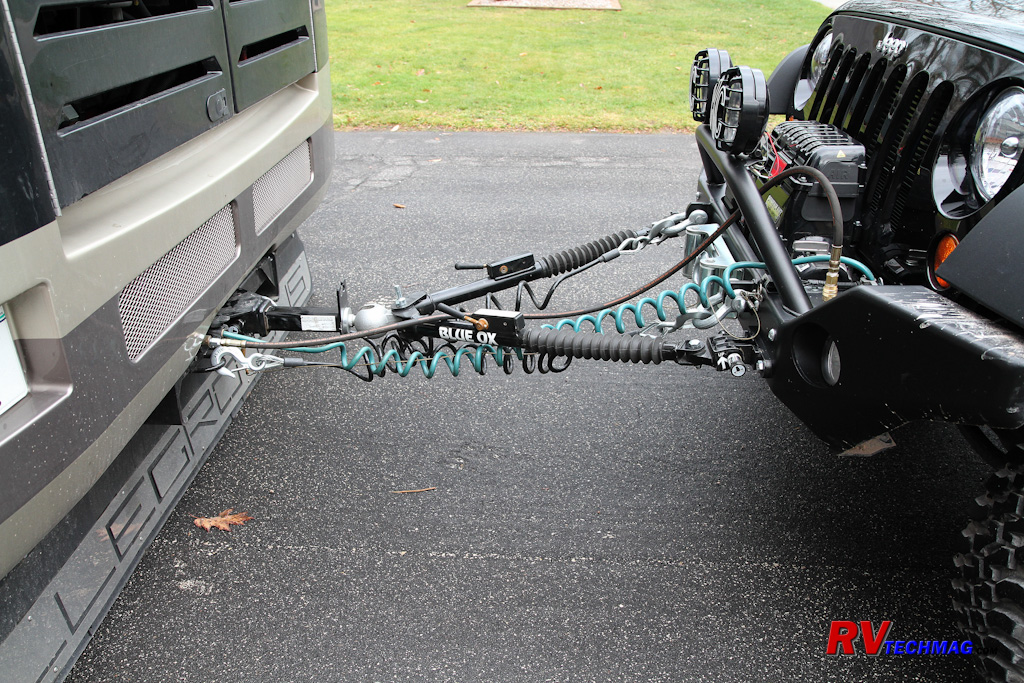
When connecting the tow bar it's important to keep the tow bar as close to level as possible. Excess angle will allow vaulting or
submarining during a sudden stop.
|
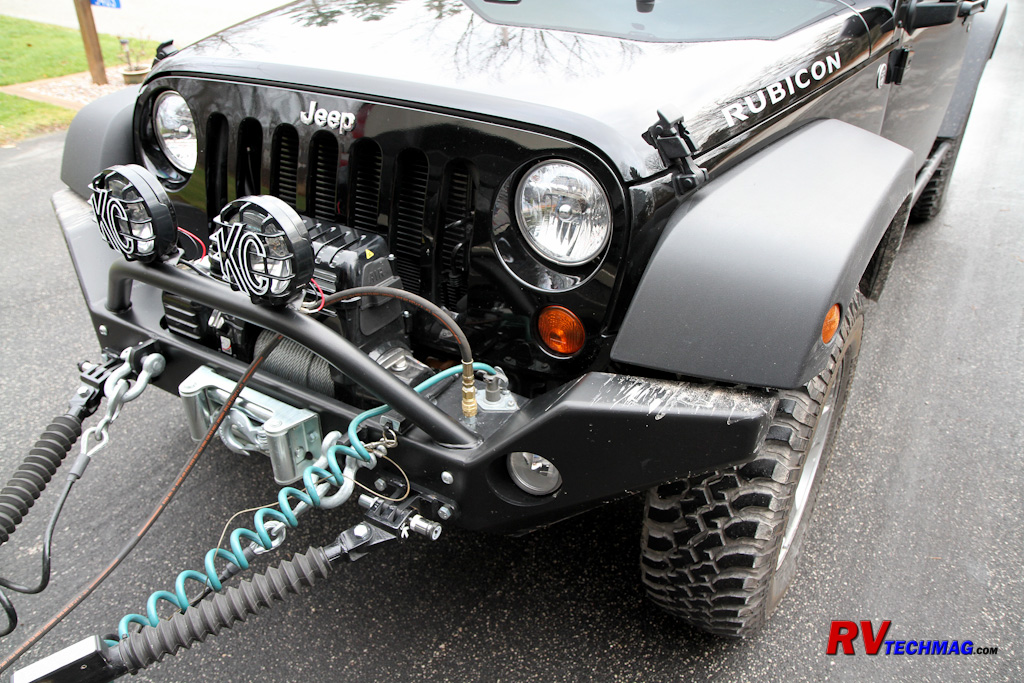
The D-Ring shackles on the Rock Hard front bumper made for perfect safety cable connection points. The breakaway switch, lighting
umbilical, and brake line were all clustered in a central location on the bumper.
|

Preparing the Wrangler in this fashion yielded the perfect balance between towing and off-road use and made for a very versatile
vehicle.
|
Source
Return to Home Page
If you enjoyed this article be sure to recommend RVtechMag.com to your friends, like us on Facebook or Twitter
or subscribe to our RSS feed.



|














